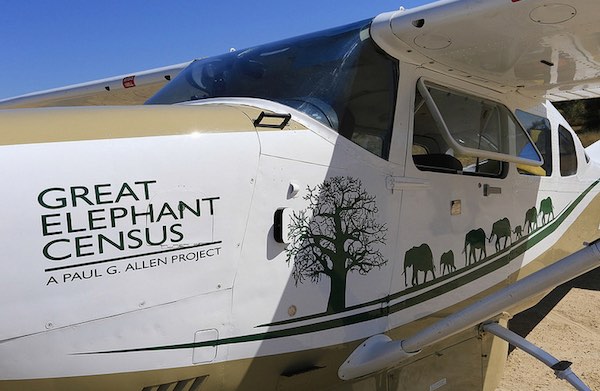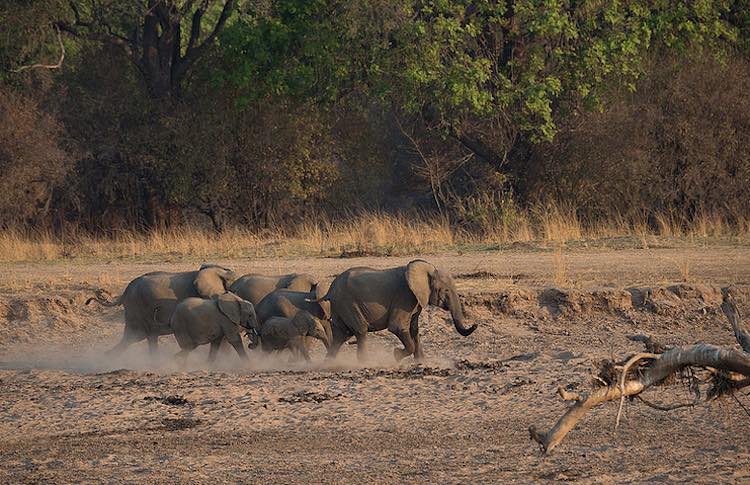The first results from aerial surveys in Africa as part of the Great Elephant Census were released last month by the Zambia Department of National Parks and Wildlife. After 250 hours of flight time and data analysis, the results are optimistic.
Zambia is one of 20 countries to participate in the census, which launched in 2013 with continent-wide results due out later this year. It is the first pan-African elephant census in 40 years, with researchers using a standardized method of data collection to create an up-to-date picture of which areas need support in anti-poaching efforts.
“The numbers overall appear more positive than expected,” said Matt Brown, Africa Conservation Director for the The Nature Conservancy, which consulted on the project. “It suggests that frontline protection is making a difference.
WANT ANIMAL GOOD NEWS EVERY DAY? …GET OUR APP—> Download FREE for Android and iOS
The insights revealed through this survey can help create tailored management plans to more effectively protect elephants and deploy the limited conservation resources and dedicated rangers where they most will be able to make an impact. The census also pinpoints opportunities for countries to collaborate across borders and close security gaps.
“These results are a great example of what we hope to achieve through the Great Elephant Census by informing future efforts,” said James Deutsch, Director of Wildlife conservation for Vulcan Inc., a group funded by Paul G. Allen, the co-founder of Microsoft. “In Luangwa and even Kafue, the existing elephant protection efforts seem to be successful in controlling poaching and stabilizing elephant populations, while elephants are declining in Lower Zambezi and Sioma Ngwezi. The census results tell us that we need to replicate the success across all of Zambia’s national parks.”

CHECK OUT All the Iconic Species That Have Leaped Off The Endangered List
The censuses suggested that elephant numbers are stable (or possibly even increasing) in the two largest elephant landscapes, Luangwa and Kafue. In two other locations, numbers are declining. The aerial survey was conducted from September 4-26, 2015, over 21 million acres of Zambia. The survey area comprised national parks and some game management areas. (See details on survey results and methodology, here.)
The Nature Conservancy stresses that the optimistic findings doesn’t mean they will be resting now.
“Poaching is like water – it moves to the path of least resistance. When one area is better patrolled, poachers go elsewhere so we have to keep the pressure on.”
SHARE the Good News on World Wildlife Day!
Photo via NatureConservancy by Kenneth K. Coe




















